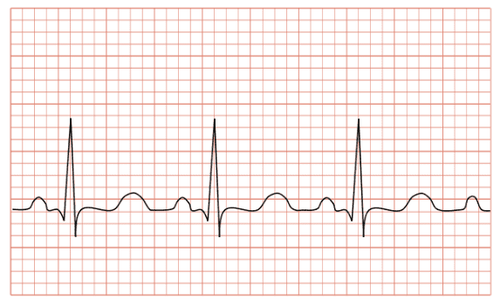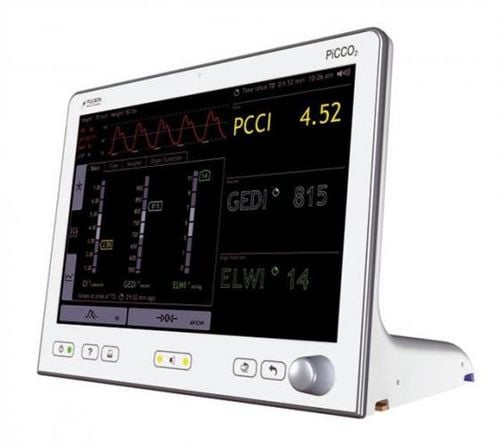This is an automatically translated article.
Electrocardiogram is an electrocardiogram technique that shows the heart rate. So what is heart rate and what are the measurements to determine heart rate?
1. What is heart rate?
Heart rate is the number of heartbeats, sinus rhythms or cardiac cycles in one minute. At rest, the heart rate in an adult is as follows:
Normal heart rate: 60-100 beats/min. Tachycardia: >100 beats/min. Bradycardia: <60 beats/min. When the heart rate is tachycardia, cardiac output is reduced, and if this is prolonged, it can lead to impaired cardiac function. When the heart rate is slow, the organs in the body are not supplied with enough blood to nourish and function, especially the heart and brain, so the patient may feel dizzy, lightheaded or faint. When the heart rate is not normal, the heart rhythm is disturbed, it can cause symptoms such as shortness of breath, chest pain, this condition if not treated and left for a long time can cause heart function to be impaired. decline.
SEE ALSO: Factors affecting cardiac output
Periodic health checkups and examinations help timely detect abnormal cardiovascular problems. In particular, measuring the heart rate is very important because it shows whether the heart rate is irregular, fast or slow.

Chóng mặt là một dấu hiệu của trường hợp tần số tim nhanh
2. How to measure heart rate
To check and identify abnormal heart rhythm problems, doctors will measure the heart rate. There are 3 ways to measure heart rate, they are: frequency scale,
2.1 How to measure heart rate using a frequency scale
Using a frequency scale to measure heart rate is a method with many advantages and convenience. The frequency scale consists of two faces, side 1 and side 2. In which, side 1 is used to measure with electrocardiogram with recording speed of 25mm/s and side 2 is used to measure with electrocardiogram with recording speed is 50mm/s. Each face has two banks with dividing lines as follows:
Bank 1 (also known as 2RR edge): is a row of frequency lines. The letter 2RR, where RR is the distance from the R wave to the next R wave. The 2RR border is used in cases where the heart rate is slow and normal. Border 2 (also called border 10RR): used in cases of tachycardia, ventricular fibrillation or used to calculate the natural frequency of the P' or f waves for atrial fibrillation or flutter fields. Example of using the frequency scale to measure heart rate with normal or slow heart rate and recording speed of 25mm/s, choose side 1 and border 2RR. Apply the frequency gauge so that the shore is placed along the lead and the arrow of the shore points to the R wave crest. Corresponding to the R wave crest separated from the R wave, we can read the heart rate results to be measured.

Điện tâm đồ
2.2 How to measure heart rate with frequency table
To measure heart rate using a frequency table, first calculate the RR interval in percentages of a second(s). With an electrocardiogram with a recording speed of 25mm/s, each RR interval has 18 cells, 1mm of the small square corresponds to 0.04s and 5mm of the large square corresponds to 0.2s, we can determine the interval. The RR is 0.72 percent of a second (0.04s × 18).
Based on the number of seconds of the RR interval, we can find the corresponding frequency F in the frequency table.
2.3 How to measure heart rate using the frequency formula
In case it is not possible to use the frequency scale and the frequency table, we can use the formula to measure the heart rate. After determining the RR interval in seconds, we can use the following formula to calculate the frequency F:
Formula: F = 60/RR
For the RR interval = 0.7s, the corresponding heart rate is 86 (60/0.7)
Some things to keep in mind when measuring heart rate are as follows:
When the R wave is too small or fuzzy, unclear, another wave should be chosen to calculate the frequency (eg S wave). With cases of arrhythmia, irregular heartbeat, to determine the average heart rate, many RR intervals of different short lengths must be selected to calculate the average first. In the case of atrioventricular block or atrioventricular dissociation, we must calculate the atrial and ventricular rates separately because the P and R waves are separate. The determination of the frequency of the f wave or the P' wave in atrial fibrillation or atrial flutter is also calculated using the 3 tools mentioned above. Heart rate is the number of heartbeats or heart cycles in one minute. There are 3 ways to measure heart rate corresponding to the use of 3 instruments: ruler, table and formula.
With the importance of measuring heart rate, now Vinmec International General Hospital has included this technique in its periodic health checkup packages to help patients detect diseases early and intervene when necessary to ensure quality of life.
To ensure the requirements of customers, now Vinmec International General Hospital deploys periodic health check-up packages suitable for each customer's age, gender, and individual needs with a preferential price policy. offers, including:
Child Health Checkup Package Standard General Health Checkup Package Special General Health Checkup Package VIP Health Checkup Package Diamond Health Checkup Package Work Health Checkup Package permit- Issue work permits With high quality human resources and outstanding facilities, modern equipment system such as PET/CT machine, CT 640, MRI, world standard laboratory system world, the world's leading modern ultrasound machine system, electrocardiogram machine... thus giving accurate results, making a significant contribution to the identification of the disease and the stage of the disease. Therefore, periodic health check-ups at Vinmec will bring customers the highest peace of mind and satisfaction.
Please dial HOTLINE for more information or register for an appointment HERE. Download MyVinmec app to make appointments faster and to manage your bookings easily.













